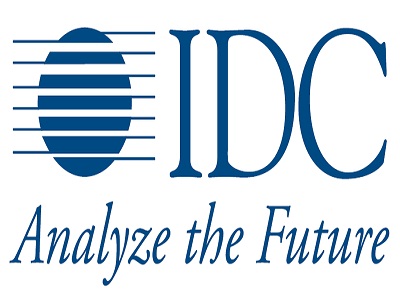E-Business
Over 45% Enterprises in Nigeria to Deploy UCC Solutions in Next 3 Years

More than 45% of enterprises in Nigeria are planning to deploy unified communications and collaboration (UCC) solutions in the next three years, according to the latest research from global IT market intelligence firm International Data Corporation (IDC).
Referencing its ‘Unified Communications Trends and Priorities in Nigeria 2013 Survey Results’ report, IDC on Tuesday said it expected the adoption of convergence technologies to increase over the coming years as enterprises transform their business-to-business (B2B) and business-to-consumer (B2C) models in order to exploit the opportunities offered by these solutions.
Based on its survey results, IDC expects the uptake of UCC solutions in Nigeria to blossom over time as the substantial cost savings, simplified management, reduced latency, improved customer experience, and increased workforce productivity brought about by UCC will undoubtedly prove attractive to organizations of all sizes.
In line with this development, the local organizational practice of buying individual services such as telephony, instant messaging, audio/videoconferencing, and email from different vendors is expected to decline over the course of 2014.
“Email applications stand out as the most used element of UCC among Nigerian enterprises,” said Oluwole Babatope, a research analyst for telecommunications and media at IDC West Africa. “However, the more advanced elements of UCC, such as conferencing applications, enterprise social software, and videoconferencing/telepresence equipment, have yet to gain traction in local enterprises due to the inadequate telecommunications infrastructure currently seen in Nigeria. Consequently, we expect the uptake of advanced UCC applications to occur over the longer term as the infrastructure required to support advanced services steadily improves in the country.”
“The future technological priorities of Nigerian enterprises are clear,” continued Babatope. “They will increasingly focus on upgrading their existing infrastructures, expanding their network capacities, improving their data backup and recovery capabilities, strengthening their WAN/network security protocols, and enhancing the performance of applications on WAN topologies. Each of these priorities will contribute to increased adoption of UCC in the country.”
Overall, IDC expects the implementation of UCC solutions in Nigeria to remain on a positive growth trajectory as such applications are slowly but surely being incorporated into the business processes of Nigerian organizations.
Meanwhile, on the vendor side, IDC’s survey identified Cisco, Avaya, and Microsoft as the leading vendors of UCC solutions in Nigeria.
IDC’s ‘Unified Communications Trends and Priorities in Nigeria 2013 Survey Results’ provides a succinct overview of the latest UCC trends and priorities in Nigeria.
The study includes an overview of key industry developments in communications convergence, the major UCC players in Nigeria, and the key technology priorities for organizations.
It also provides an insightful analysis of the UCC environment in most enterprises in Nigeria and assesses their options for the future.
The insights are based on continuous research with technology leads in various SMBs and large organizations, as well as on interviews with industry experts and inputs from IDC analysts on the ground in Africa.
E-Business
NITDA Warns Against Fake Google Play Store

National Information Technology Development Agency (NITDA) has issued a public advisory warning Nigerians about a fraudulent website impersonating the Google Play Store.

Mrs Hadiza Umar, head of Corporate Affairs and External Relations at NITDA, made this known on Friday in Abuja.
Umar stated that the fake website was distributing a new malware strain known as the Play Praetor Trojan.
“Cybercriminals are using fraudulent websites designed to mimic the Google Play Store to lure victims into downloading malicious applications,” she said.
She explained that the fake Play Store links were being circulated through various social engineering tactics, including phishing emails, malicious advertisements, and SMS messages.
According to Umar, once the fake application is installed, the Play Praetor Trojan gives attackers unauthorised access to the victim’s device.
“This access can lead to data theft, credential harvesting, financial fraud, remote control of the device, and further malware deployment,” she warned.
She urged the public to download apps only from the official Google Play Store or other trusted sources.
Umar also advised users to verify app developers, read reviews before installation, regularly update their devices and apps to patch vulnerabilities, and use reputable mobile security solutions to detect and block threats.
E-Business
Cyberattacks: ‘56 Percent of Cases Stem from Existing Logins

A new report by Sophos, ybersecurity firm, has said that attackers primarily gained initial network access—56 per cent of all MDR and IR cases—by exploiting external remote services like firewalls and VPNs using valid credentials.

The 2025 Sophos Active Adversary Report details attacker behavior and techniques from over 400 Managed Detection and Response [MDR] and Incident Response [IR] cases in 2024.
According to the report, the combination of external remote services and valid accounts align with the top root causes of attacks.
For the second year in row, compromised credentials were the number one root cause of attacks [41% of cases]. This was followed by exploited vulnerabilities [21.79%] and brute force attacks [21.07%].
When analysing MDR and IR investigations, the Sophos X-Ops team looked specifically at ransomware, data exfiltration, and data extortion cases to identify how fast attackers progressed through the stages of an attack within an organisation.
In those three types of cases, the median time between the start of an attack and exfiltration was only 72.98 hours [3.04 days]. Furthermore, there was only a median of 2.7 hours from exfiltration to attack detection.
“Passive security is no longer enough. While prevention is essential, rapid response is critical. Organisations must actively monitor networks and act swiftly against observed telemetry.
Coordinated attacks by motivated adversaries require a coordinated defense. “For many organisations, that means combining business-specific knowledge with expert-led detection and response.
Our report confirms that organizations with proactive monitoring detect attacks faster and experience better outcomes,” said John Shier, field CISO.
The 2025 Sophos Active Adversary Report further reveals that attackers can move quickly, with a median of just 11 hours between initial access and a breach attempt on Active Directory, a critical asset in Windows environments.
Akira emerged as the most prevalent ransomware group in 2024, followed by Fog and LockBit, the latter still active despite a major takedown.
Attack detection has improved overall, with dwell time—the time attackers remain undetected—dropping from four days to just two, thanks largely to the inclusion of MDR (Managed Detection and Response) cases.
Dwell time varied depending on the type of case: it held steady at 4 days for ransomware and 11.5 days for non-ransomware cases in incident response (IR) investigations.
In contrast, MDR cases showed much faster response times—3 days for ransomware and just 1 day for non-ransom – ware attacks.
The report also highlights that 83% of ransomware deployments occurred outside local business hours, showing attackers favor overnight activity.
Additionally, Remote Desktop Protocol (RDP) was exploited in 84% of cases, making it the most commonly abused Microsoft tool.
To strengthen their cybersecurity posture, Sophos advises organizations to take several key steps.
First, they should close any exposed Remote Desktop Protocol (RDP) ports and implement phishing-resistant multifactor authentication (MFA) wherever feasible to reduce unauthorized access risks.
Additionally, companies should prioritize timely patching of vulnerable systems, especially those exposed to the internet. Deploying Endpoint Detection and Response (EDR) or Managed Detection and Response (MDR) solutions with 24/7 monitoring is crucial.
Finally, having a well-defined incident response plan—and regularly testing it through simulations or tabletop exercises—can greatly improve preparedness for potential attacks.
E-Business
Kaspersky Presents Insight on 14% Increase in Spyware Attacks on Businesses in Africa @ GITEX Africa

As part of the company’s participation at the GITEX Africa conference, taking place in Morocco on 14-16 April 2025, Kaspersky will address the dynamics for cyberthreats in the African region as per the latest anonymised data from the Kaspersky Security Network (KSN)¹.

From 2023 to 2024 businesses in Africa were targeted by web threats, on-device threats, and attacks aiming to steal data, including spyware and password stealers.
Phishing and ransomware continue to be significant threats in the region, with 66 million phishing link clicks seen by Kaspersky in the African region in 2024, including over 14.8 million phishing link clicks by corporate users.
Web-based threats, or online threats, are a category of cybersecurity risks that may cause an undesirable event or action affecting users browsing the Internet.
According to Kaspersky data, there were 131 580 587 web threats detected in 2024 in the African region, including almost 20 million attack attempts in Kenya, almost 17 million in South Africa, and 12.6 million in Morocco. Businesses were targeted by web threats more often in 2024 than in 2023, with threat detections increasing by 1.2%.
Local (on device) threats include malware that is spread via removable USB drives, CDs and DVDs, or that initially makes way onto the computer in non-open form (for example, programs in complex installers, encrypted files, etc.).
According to Kaspersky telemetry, local (on device) threat detections in organisations in the African region in 2024 increased by 4% compared to 2023. Among the countries that saw growth in local threats detected in organisations were Nigeria (169% increase), Ethiopia (86%), South Africa (32%), Senegal (11%), and Morocco (9%).
There has been a spike of threats related to data theft. According to Kaspersky data, there was a 14% growth in spyware attack detections on businesses in the African region from 2023 to 2024.
Spyware is secretly installed on a user’s computer to monitor their actions and collect their data. Apart from that, there has been a 26% increase in password stealer detections. Password stealers are a type of malware designed to harvest login credentials and other sensitive data.
“Our statistics show an increase in attack detections for several types of cyberthreats, and the factors driving these increases are multifaceted. In the B2B sector, the continuing shift toward hybrid work models and the rush to digitise operations — often outpacing cybersecurity investments — may leave businesses in Africa exposed to advanced persistent threats.
In the B2C space, the explosion of digital financial services, coupled with low digital literacy rates, makes individuals prime targets for opportunistic attacks,” comments Maher Yamout, Lead Cybersecurity Researcher with Kaspersky Global Research and Analysis Team.
“Organisations in Africa should prioritise a unified approach by enhancing collaboration, investing in specialised cybersecurity training, and promoting digital literacy to effectively combat the rising tide of cybercrime. Initiatives like the African Cyber Surge operation and targeted educational programs can serve as blueprints for building a resilient digital ecosystem across the continent.”

 Telecom3 days ago
Telecom3 days agoMTN Plans Second Public Offer in Nigeria

 Broadcasting3 days ago
Broadcasting3 days agoSubscriber Withdraws Suit against MultiChoice, FCCPC over Price Hike

 E-Business3 days ago
E-Business3 days agoCyberattacks: ‘56 Percent of Cases Stem from Existing Logins

 News3 days ago
News3 days agoSenate Committee Partners with Kuda Bank to Tackle Compliance Crisis as Nigeria Loses ₦3.4 Trillion

 E-Business3 days ago
E-Business3 days agoKaspersky Presents Insight on 14% Increase in Spyware Attacks on Businesses in Africa @ GITEX Africa

 E-Financial3 days ago
E-Financial3 days agoSterling Bank Reiterates Transfer Fees Removal

 General News3 days ago
General News3 days agoOpenAI Sues Elon Musk Claiming Bad-Faith Tactics

 General News3 days ago
General News3 days agoFG Unveils e-Visa, Digital Entry Cards to Strengthen Border Security




























